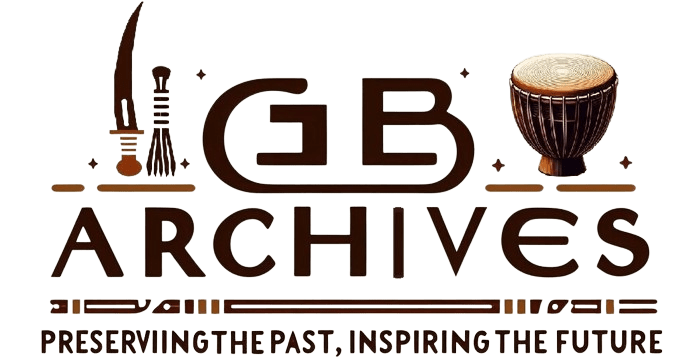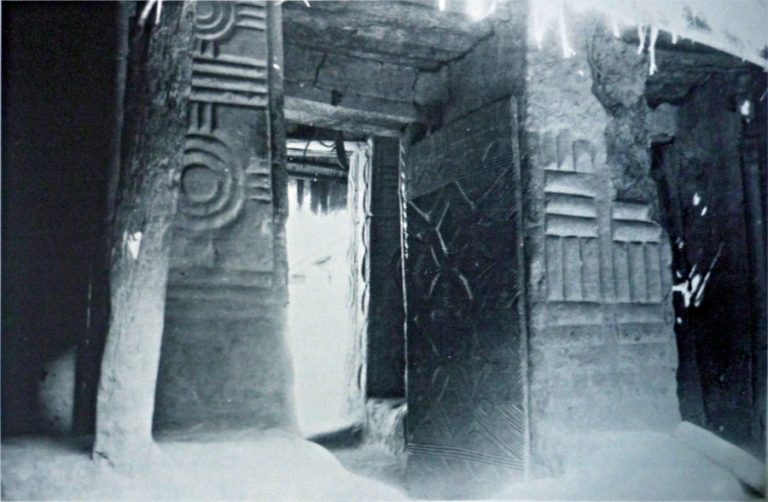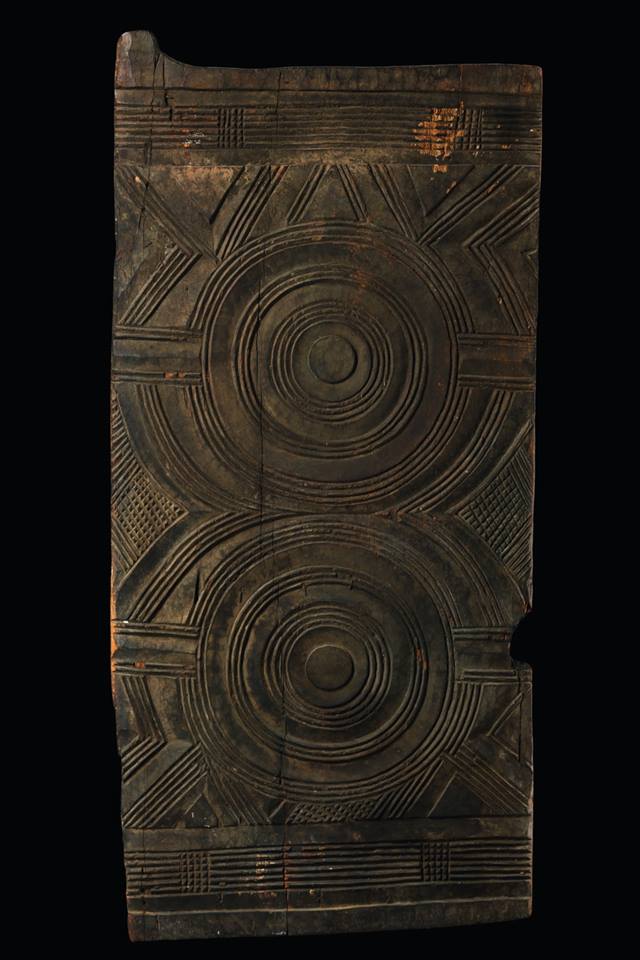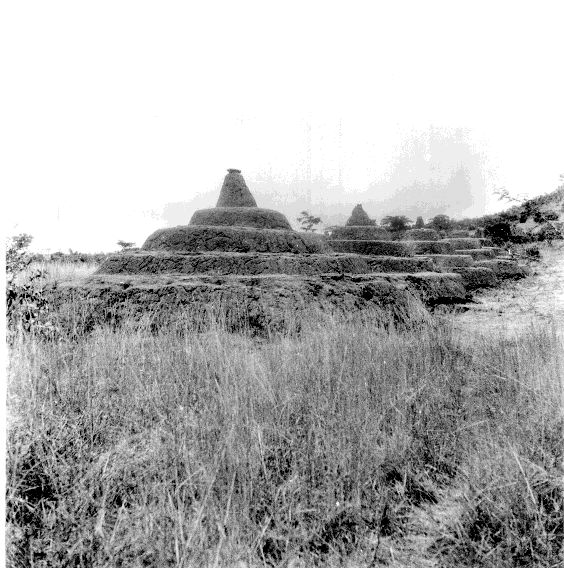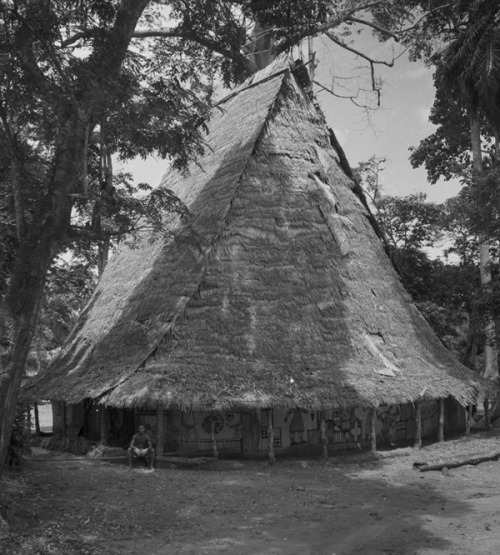
© The Trustees of the British Museum, shared under Creative Commons Attribution-ShareAlike 4.0 International (CC BY-SA 4.0) license.
View of a large rectangular Ekpe meeting house in Umuajatta village, Olokoro. The building is distinguished by its steeply pitched, thick thatched roof that extends significantly beyond the low walls. The walls, constructed of wattle and daub or mud brick, feature distinct painted decorations in the style of Ngwomo ghost houses. These decorations consist of geometric patterns and possibly stylized figures, divided into distinct horizontal registers. The building is set within a natural, wooded environment. A single figure sits in front of the structure, providing a sense of scale. Photograph by G.I. Jones, 1932-1938
This photograph, taken by G.I. Jones between 1932 and 1938, offers a look at the architectural and artistic traditions of the Igbo people, specifically those connected to the Ekpe society. The Ekpe society, also known as the Leopard Society, is a secret society with deep roots in West Africa, particularly in Igboland. It has historically played a key role in keeping social order, enforcing laws, and carrying out religious ceremonies.
The meeting house shown here has several important features. The steeply pitched, thatched roof is a practical response to the region’s climate, effectively shedding rainwater and providing shade. The large overhang further protects the walls from the weather. The walls themselves, made from local materials like wattle and daub or mud brick, are decorated with striking painted designs.
These painted decorations are of special interest, as they show influences from the Annang artistic tradition, similar to the Ngwomo ghost houses. The Ngwomo are known for their detailed mud sculptures and painted house fronts, often showing images of ancestors and spirits. The presence of these artistic images on an Ekpe house suggests a cultural sharing and a mixing of artistic and spiritual traditions. The geometric patterns and stylized figures, arranged in distinct horizontal sections, add to the building’s visual effect.
The building’s location in a natural, wooded setting further highlights its connection to the community and its traditions. The single figure seated in front of the structure provides a human element and a sense of size, showing the building’s scale.
This photograph serves as a valuable historical record, offering information about the architecture, art, and cultural practices of the Igbo people and the Ekpe society in the early 20th century. It emphasizes the rich artistic history of the region and the complex interaction of cultural influences.
Explore Further:
To further understand the artistic context of this photograph and the broader artistic landscape of the region during this period, consider exploring:
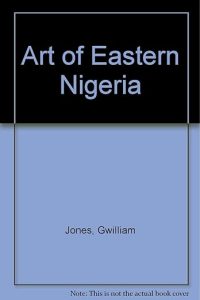 Recommended Books
Recommended BooksTitle: Art of Eastern NigeriaAuthor: Gwilliam I. JonesPublisher: Cambridge University PressPublication Date: August 31, 1984Format: HardcoverPages: 240ISBN-10: 0521259274ISBN-13: 978-0521259279Language: English Overview “Art of Eastern Nigeria” by Gwilliam I. Jones is a significant work that explores the rich artistic traditions
Discover more from Igbo Archives
Subscribe to get the latest posts sent to your email.
